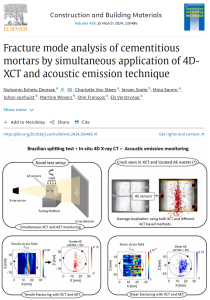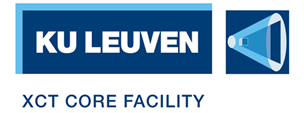 Abstract
Abstract
Cementitious brittle construction materials are susceptible to fracturing due to their heterogeneous material composition and relatively weak bond between the aggregates and paste. Hence, enhanced methods of fracture analysis in these materials are an important subject of research. The acoustic emission technique (AET) is frequently used in the study of brittle construction materials, yet the random nature of cracking and the heterogeneity of materials strongly affect the AE results, and necessitates verification of AE data with complementary monitoring techniques. Therefore, in this work, a test setup is developed where fracture during Brazilian splitting tests is simultaneously monitored by AE sensors and X-ray computed tomography (XCT). The novel test setup is designed to incorporate AE monitoring into in-situ step-wise load tests of cementitious mortar samples inside an XCT scanner. Digital volume correlation (DVC) of the XCT scans allows in-depth analysis of the fracture mechanism and validation of the AE results. Using DVC the damaged zones with high shear and tensile strain values were identified in addition, the X-ray images were used to investigate the influence of heterogeneities in the overall failure modes. For the AE-based damage localization, three arrival time estimation methods are assessed, with the Akaike Information Criterion (AIC) showing a 50–75% improvement in locating AE sources within the cracked zone. In addition, two AE-based fracture mode analysis methods are compared with the DVC strain field plots. Using both average frequency and rise angle analysis (AF/RA) and peak frequency (PF) analysis, 80–100% AE events in the shear strain zone were able to be classified as shear mode. PF showed better performance in the early load stages while AF/RA showed consistent results throughout. In general, the shear and tensile crack mode classification of the AE events agreed well with the shear and tensile strain field plots.
